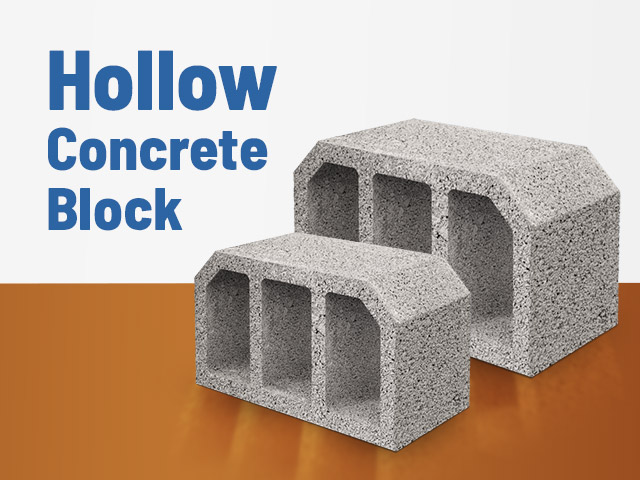
Hollow Concrete Block is produced in a wide variety of shapes and sizes. In order to pour its mixture consisting of cement, sand, gravel and water into mold, the mixture should be kept waiting until it become pasty. Hollow Concrete Block can only be poured into molds in this pasty form.
When it dries, it becomes as hard as concrete. In general, there are two types of hollow concrete blocks which are standard and filled.
Standard Hollow Concrete Block
The hollow block comprises one or more hollow core. These cores reduce the total cross-sectional area of the block by 25%. A standard hollow concrete block is generally produced with more than 50 percent solid.
The standard hollow concrete blocks have two sizes which are full and half sizes.The full-size block is rectangular and have two hollow cores. The half hollow block is cubical and single hollow block whose form is half of a whole block.
Filled Hollow Concrete Block
Although it is called as filled hollow block, these blocks have hollow cores. As the filled blocks have a larger surface area than the hollow blocks, they have fewer hollow cores than the hollow blocks. The cores comprise less than 25 percent of the cross-sectional area of filled concrete block which is also named as solid hollow block.
Fully Filled Hollow Block
Some of these blocks consist of stacked stones. Some have a suitable form for slabbing cobblestone. Stacked stones have two hard and uneven surfaces to preserve their natural appearance. The other four surfaces are exactly parallel to each other.
They are used for practically building solid walls that look like reinforced concrete. Natural stones are generally unequal in shape and difficult to adapt to each other in stacking or slabbing. Cobblestones have smooth forms and are slabbed like glazed tiles to achieve an elegant look especially in city landscape.
How to Slab Hollow Concrete Blocks?
The standard hollow blocks are often used to build structures such as large fences. The use of reduced volume of concrete in each block provides significant savings in material cost over the entire wall. It also provides practicality in transportation since being lighter.
If the hollow concrete blocks are used for the design, they have enough space that can be accompanied by reinforcing materials such as steel bars. Sometimes it is also possible to pass water or electrical pipes into the hollow cores.
Fully filled hollow blocks are used for asphalting and other projects where structural defects on roads can be dangerous or inappropriate. Furthermore, the construction of these blocks requires a relatively high amount of mortar compared to other hollow concrete blocks.
